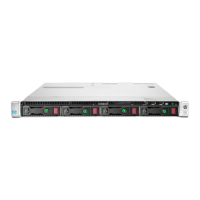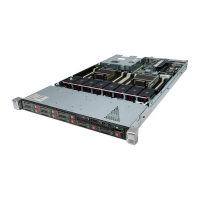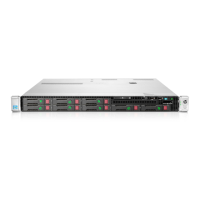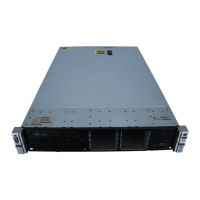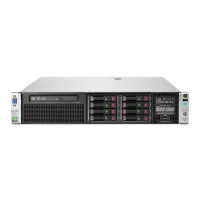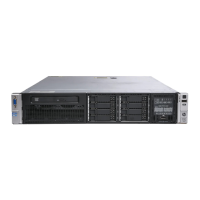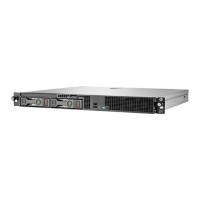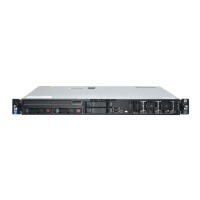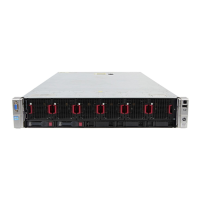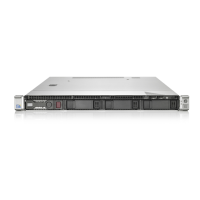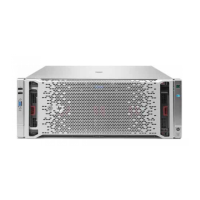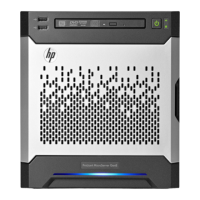Hardware options installation 42
3
UDIMM is supported at 1.35V 1DPC or 2DPC at 1333 MT/s using HP SmartMemory only. Third-party memory supports
1.35V 1DPC or 2DPC at 1066 MT/s, or 1.5V 1DPC or 2DPC at 1333 MT/s.
4
HDIMM memory requires 12 DIMMs per processor.
HP SmartMemory
HP SmartMemory, introduced for Gen8 servers, authenticates and unlocks certain features available only on
HP Qualified memory and verifies whether installed memory has passed HP qualification and test processes.
Qualified memory is performance-tuned for HP ProLiant and BladeSystem servers and provides future
enhanced support through HP Active Health and manageability software.
Certain performance features are unique with HP SmartMemory. While the industry supports DDR3-1333
RDIMM at 1.5V, this Gen8 server supports DDR3-1333 RDIMM up to 3 DIMMs per channel at 1066 MT/s
running at 1.35V. This equates to up to 20% less power at the DIMM level with no performance penalty. In
addition, the industry supports UDIMM at 2 DIMMs per channel at 1.35V at 1066 MT/s. HP SmartMemory
supports 2 DIMMs per channel at 1333 MT/s, or 25% greater bandwidth.
The 1333 MHz support for 3DPC PC3-10600H HP SmartMemory feature can be enabled through RBSU to
enable HP SmartMemory 1600 RDIMMs to run at 1.5V 3DPC at 1333 MT/s.
Memory subsystem architecture
The memory subsystem in this server is divided into channels. Each processor supports four channels, and
each channel supports three DIMM slots, as shown in the following table.
Channel Population order Slot number
1
A
E
I
12
11
10
2
B
F
J
9
8
7
3
C
G
K
1
2
3
4
D
H
L
4
5
6
For the location of the slot numbers, see "DIMM slot locations ("DIMM slots" on page 13)."
This multi-channel architecture provides enhanced performance in Advanced ECC mode. This architecture
also enables Lockstep and Online Spare Memory modes.
DIMM slots in this server are identified by number and by letter. Letters identify the population order. Slot
numbers indicate the DIMM slot ID for spare replacement.
Single-, dual-, and quad-rank DIMMs
To understand and configure memory protection modes properly, an understanding of single-, dual-, and
quad-rank DIMMs is helpful. Some DIMM configuration requirements are based on these classifications.
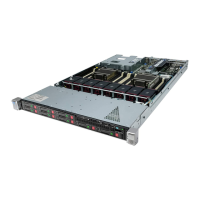
